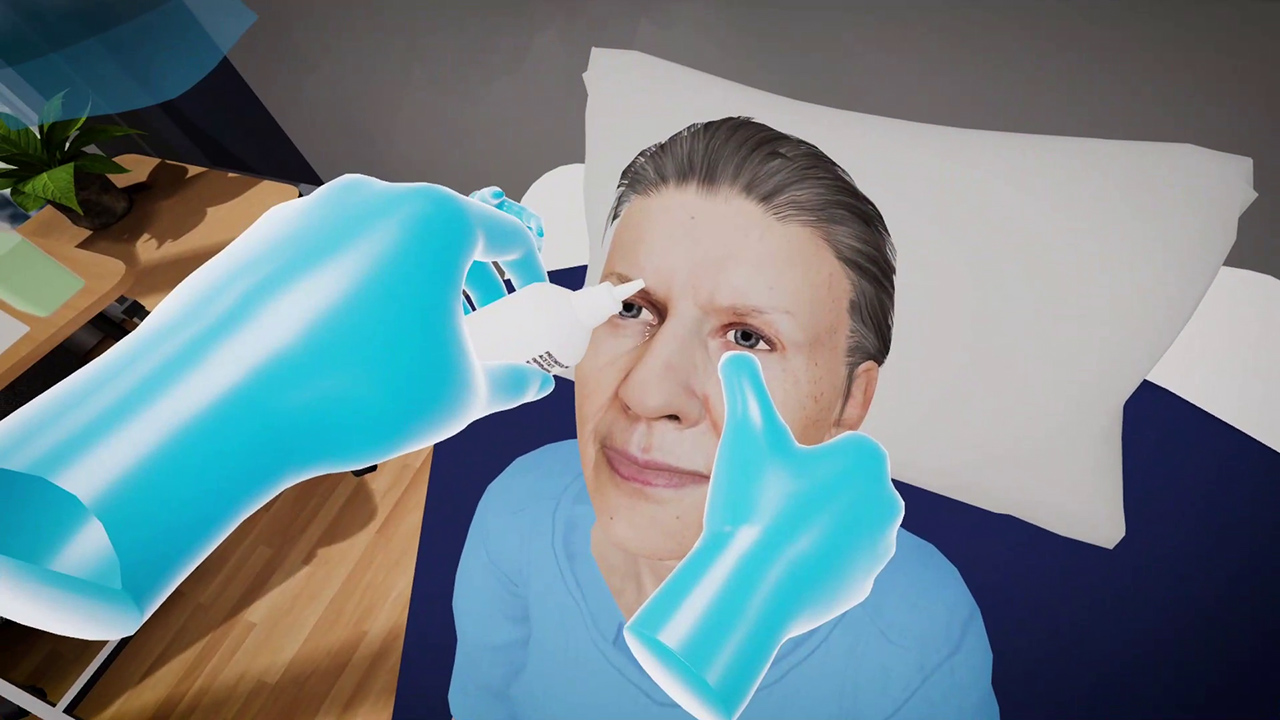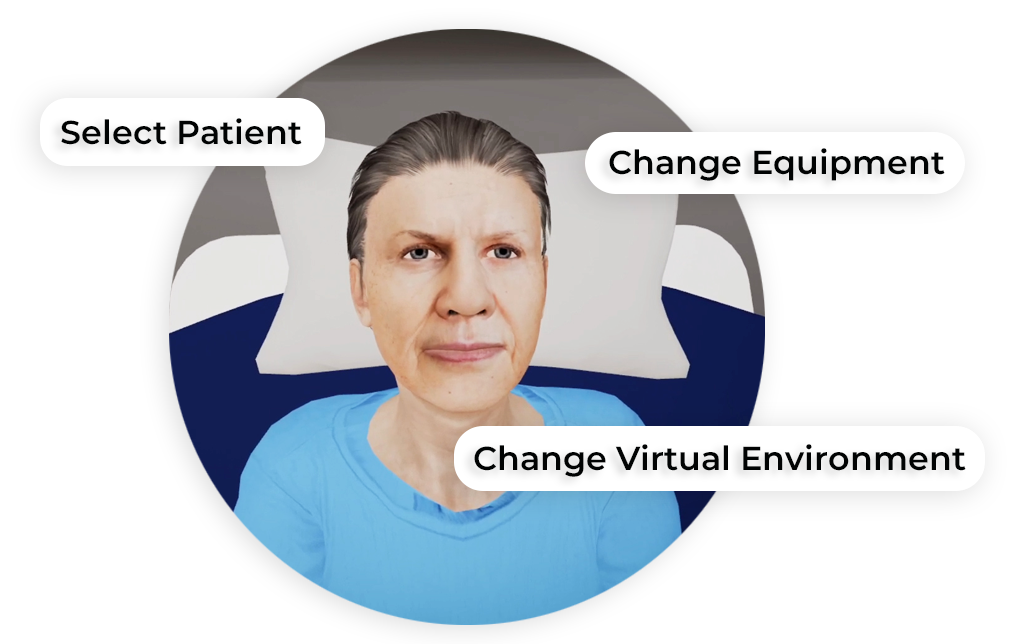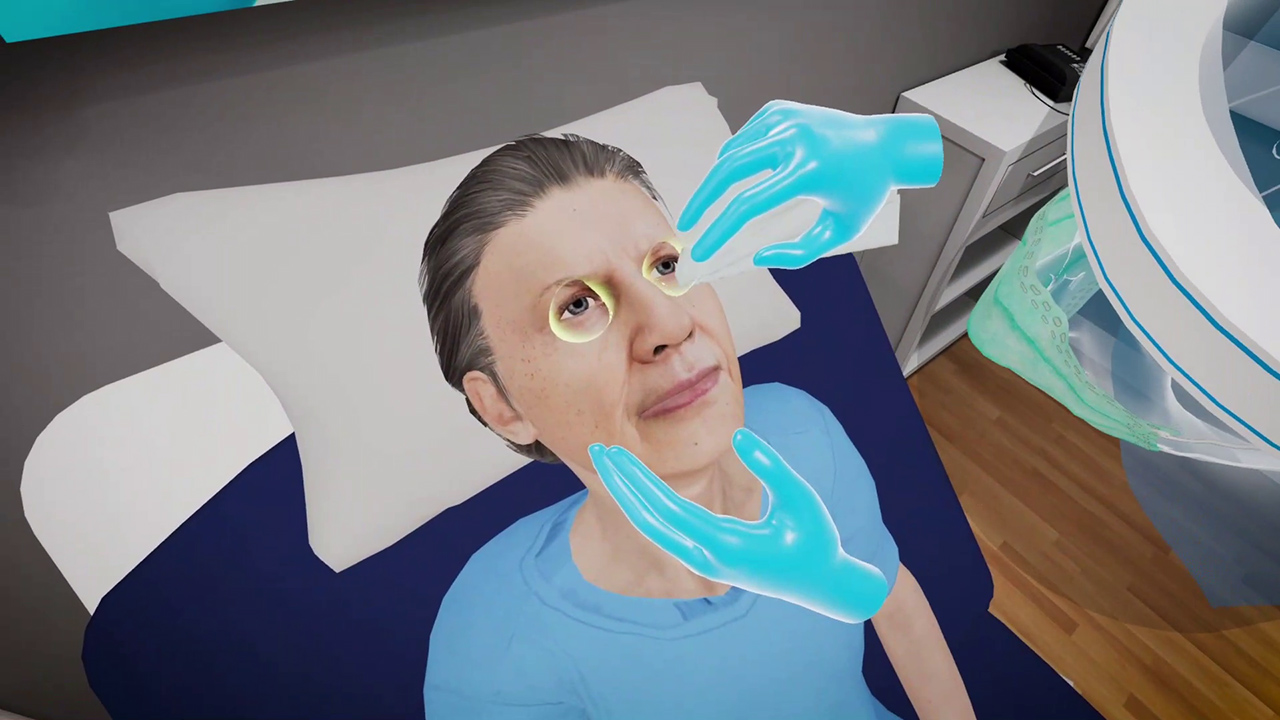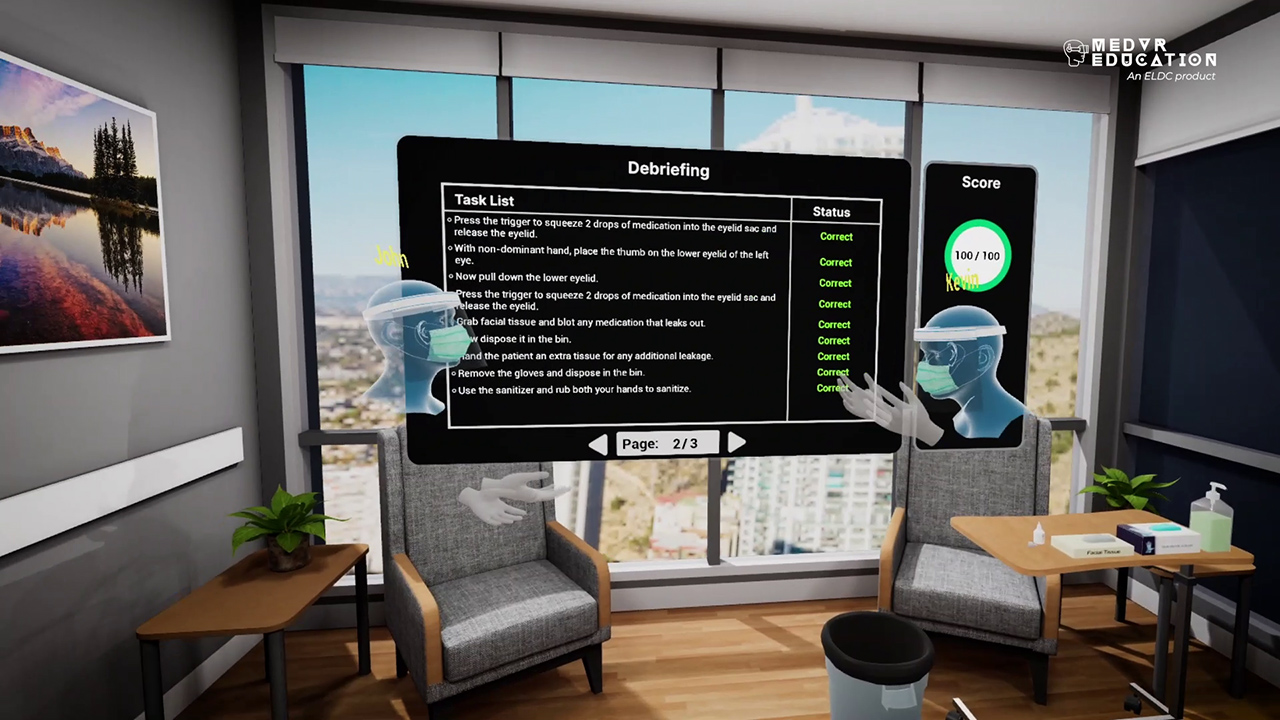Eye Medications
Sixty-eight year old Edna Thornton requires an eye drop administration. She has been prescribed steroids by her doctor to help calm the redness and itchiness caused due to allergies.
This VR simulation for administering an eye drop is designed to help healthcare practitioners practice the procedure in a safe and controlled virtual set up with a virtual patient. With both training and assessment modes, learners can perform the procedure and assess themselves on their performance.
- Demonstrate standard technique of positioning patient for eye medication administration
- Demonstrate proper method of administering eye medication
- Educate patient on proper aftercare instructions

- The Joint Commission. (2019). Standard MM.05.01.09. Comprehensive accreditation manual for hospitals. Oakbrook Terrace, IL: The Joint
Commission. - Taylor, C., et al. (2015). Fundamentals of nursing: The art and science of nursing care (8th ed.). Philadelphia, PA: Wolters Kluwer.
Customize Your Program
Get rid of the editor. Adopt in-VR customization.
MedVR Education is bringing to you in-VR customization that will enable you to customize your procedural simulations by making selections from a range of feature choices.
- Select patient from a diverse background
- Choose preferred virtual environment
- Select equipment used in the procedure
- Modify difficulty level of the assessment mode
- …..many more to come

 Multi-player
Multi-player
Sessions Physics-based Interaction
Physics-based Interaction
Core Skills Training

Eye Drop Administration
As a part of this Eye Drop administration procedure the user is required to confirm the identity of the patient and enquire about any previous steroid administration, any allergies or ongoing medications. The user will also inform the patient about the procedure and what to expect from the drops, including the many accompanying side effects and when to get in touch. Having informed the patient, the user will check the details of the drop and administer it to the patient. The procedure is designed to help learners practice interacting with the patient and performing the procedure smoothly.
Training
With prompts, guidance and affordances learners are hand-held through the process to practice the procedure in a virtual environment with a virtual patient.
- Photorealistic virtual environment
- Physics-based interactions
- Detailed instructions
- Adequate affordances to assist in task completion

Assessment
Test acquired skills to perform the procedures from start to finish without prompts. Get detailed insights to analyze performance data, both individual and group.
- Detailed insight of steps performed
- Segregated data of correct and incorrect steps
- Individual performance in multiplayer sessions
- Time tracking to monitor activity completion







